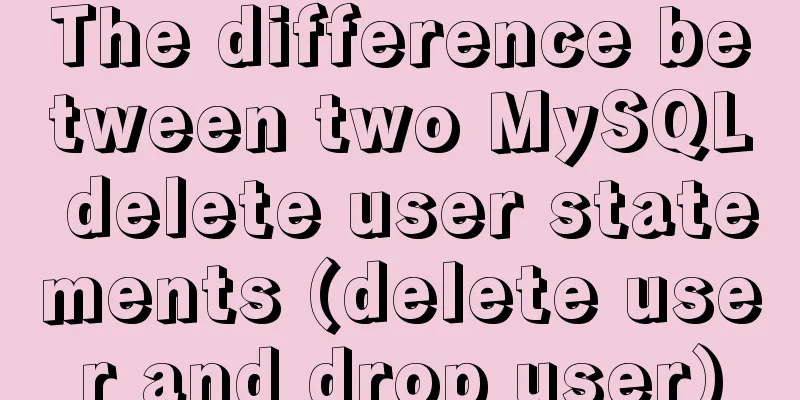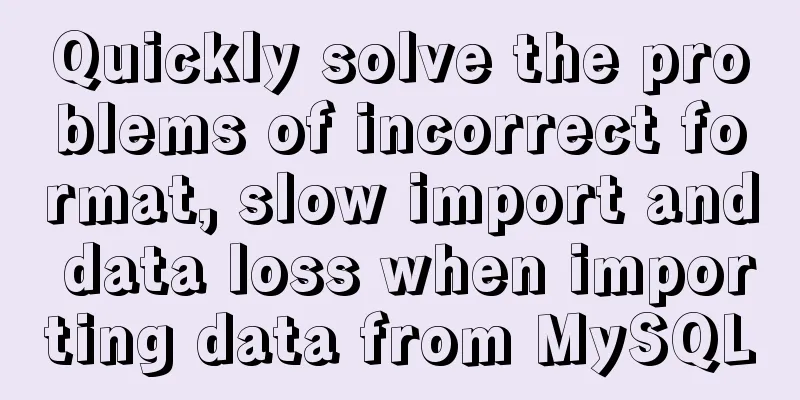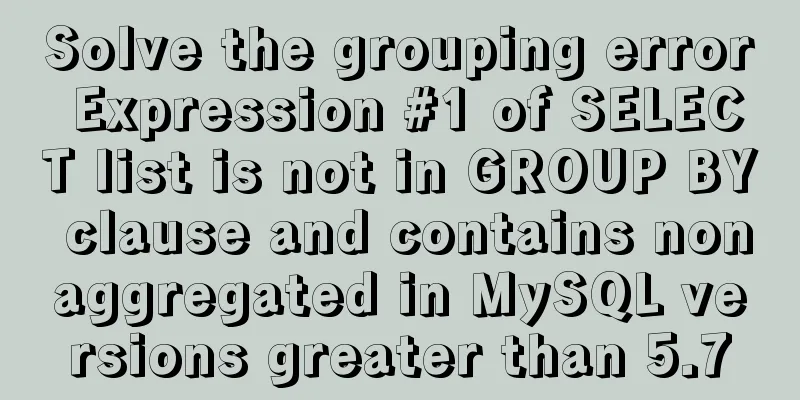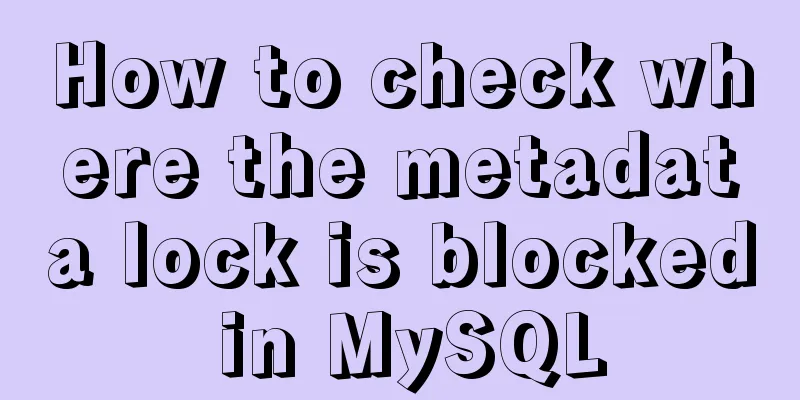The difference between two MySQL delete user statements (delete user and drop user)

|
Tip: In MySQL, we often need to create and delete users. When creating users, we generally use create user or grant statements to create them. Users created by create syntax do not have any permissions, and you need to use grant syntax to assign permissions. Users created by grant syntax directly have the assigned permissions. After some test users are created and tested, the user's life cycle may end and the user needs to be deleted. There are generally two ways to delete users in MySQL, one is delete from mysql.user First, let's look at mysql 15:13:12>>create user yeyz@'%' identified by '123456'; Query OK, rows affected (. sec) mysql 15:20:01>>grant select,create,update,delete on yeyz.yeyz to yeyz@'%'; Query OK, rows affected (. sec) mysql 15:29:48>>GRANT USAGE ON yeyz.yeyz TO 'yeyz'@localhost IDENTIFIED BY '123456'; Query OK, rows affected (. sec) [email protected]:(none) 15:20:39>>show grants for yeyz@'%'; +---------------------------------------------------------------------------------------------------------------------+ | Grants for yeyz@% | +---------------------------------------------------------------------------------------------------------------------+ | GRANT USAGE ON *.* TO 'yeyz'@'%' IDENTIFIED BY PASSWORD '*6BB4837EB74329105EE4568DDA7DC67ED2CA2AD9' | | GRANT SELECT, UPDATE, DELETE, CREATE ON `yeyz`.`yeyz` TO 'yeyz'@'%' | +---------------------------------------------------------------------------------------------------------------------+ At this point we manually delete the two users in the mysql.user table by using the delete method. When we check the user table, we find: mysql 15:20:43>>delete from mysql.user where user='yeyz'; Query OK, rows affected (. sec) mysql 15:21:40>>select user,host from mysql.user; +------------------+-----------------+ | user | host | +------------------+-----------------+ | dba_yeyz | localhost | | root | localhost | | tkadmin | localhost | +------------------+-----------------+ rows in set (.sec) There are no longer any yeyz users. We use the show grants for command to view the user we just deleted, and we find that the permission description of this user still exists: mysql 15:24:21>>show grants for yeyz@'%'; +---------------------------------------------------------------------------------------------------------------------+ | Grants for yeyz@% | +---------------------------------------------------------------------------------------------------------------------+ | GRANT USAGE ON *.* TO 'yeyz'@'%' IDENTIFIED BY PASSWORD '*6BB4837EB74329105EE4568DDA7DC67ED2CA2AD9' | | GRANT SELECT, UPDATE, DELETE, CREATE ON `yeyz`.`yeyz` TO 'yeyz'@'%' | +---------------------------------------------------------------------------------------------------------------------+ rows in set (0.00 sec) This means that although we have deleted this user from the mysql.user table, this user still exists in the db table and the permission table. To verify this conclusion, we recreate a user named yeyz@localhost. We only give this user usage permissions, and do not configure other permissions, as follows: mysql ::>>GRANT USAGE ON yeyz.yeyz TO 'yeyz'@localhost IDENTIFIED BY '123456'; Query OK, rows affected (. sec) At this time, we use the user yeyz@localhost to log in to the database service, and then perform related update operations, as follows: [dba_mysql@tk-dba-mysql-stat-- ~]$ /usr/local/mysql/bin/mysql -uyeyz --socket=/data/mysql_4306/tmp/mysql.sock --port= -p -hlocalhost Enter password: Welcome to the MySQL monitor. Commands end with ; or \g. Your MySQL connection id is Server version: 5.5.-log MySQL Community Server (GPL) Copyright (c) , , Oracle and/or its affiliates. All rights reserved. Oracle is a registered trademark of Oracle Corporation and/or its affiliates. Other names may be trademarks of their respective owners. Type 'help;' or '\h' for help. Type '\c' to clear the current input statement. mysql--yeyz@localhost:(none) 15:31:05>>select * from yeyz.yeyz; +------+ |id| +------+ | 3 | | 4 | | 5 | +------+ rows in set (.sec) mysql--yeyz@localhost:(none) 15:31:16>>delete from yeyz.yeyz where id=; Query OK, row affected (. sec) mysql--yeyz@localhost:(none) 15:31:32>>select * from yeyz.yeyz; +------+ |id| +------+ | 3 | | 4 | +------+ rows in set (.sec) The final result is predictable. A user with usage permissions performed an update operation on the database table, and it was successful. All this is thanks to our delete from mysql.user operation. Although this operation deletes the record from the user table, when the host of this record is %, if a new user with the same name is created, the new user will inherit the previous user permissions, making the user permission control invalid. This is a very dangerous operation and should be avoided as much as possible. Open it again and see how to delete a user using the drop method First, we delete the two users and then use the show grants for statement to view their permissions: mysql ::>>drop user yeyz@'%'; Query OK, rows affected (0.00 sec) mysql ::>>drop user yeyz@'localhost'; Query OK, rows affected (0.00 sec) mysql ::>> mysql ::>>show grants for yeyz@'%'; ERROR (): There is no such grant defined for user 'yeyz' on host '%' mysql ::>>show grants for yeyz@'localhost'; ERROR (): There is no such grant defined for user 'yeyz' on host '192.168.18.%' As you can see, the permissions have been completely deleted. Now we recreate a user with only select permissions: mysql ::>>GRANT SELECT ON *.* TO 'yeyz'@'localhost' IDENTIFIED BY PASSWORD '*6BB4837EB74329105EE4568DDA7DC67ED2CA2AD9'; Query OK, rows affected (. sec) We use this user to log in to the database service, and then try to perform select, update, and create operations. The results are as follows: [dba_mysql@tk-dba-mysql-stat-10-104 ~]$ /usr/local/mysql/bin/mysql -uyeyz --socket=/data/mysql_4306/tmp/mysql.sock --port=4306 -p -hlocalhost Enter password: Welcome to the MySQL monitor. Commands end with ; or \g. Your MySQL connection id is Server version: 5.5.19-log MySQL Community Server (GPL) Copyright (c) , , Oracle and/or its affiliates. All rights reserved. Oracle is a registered trademark of Oracle Corporation and/or its affiliates. Other names may be trademarks of their respective owners. Type 'help;' or '\h' for help. Type '\c' to clear the current input statement. mysql ::>>select * from yeyz.yeyz; +------+ |id| +------+ | | | | | | +------+ rows in set (0.00 sec) mysql ::>>update yeyz.yeyz set id= where id=; ERROR (): UPDATE command denied to user 'yeyz'@'localhost' for table 'yeyz' mysql ::>>create table test (id int); ERROR (D000): No database selected mysql ::>>create table yeyz.test (id int); ERROR (): CREATE command denied to user 'yeyz'@'localhost' for table 'test' It can be found that this user can only perform select operations. When we try to perform update and create operations, the system determines that there is no permission for such operations and directly rejects them. This means that when the drop user method is used to delete a user, the db table and the permission table will be cleared together. In other words, the deletion is relatively clean and will not have any impact on future users. in conclusion: When we want to delete a user, try to use the drop user method. Using the delete method may cause hidden dangers. If you create a user with the same name next time, there will be certain problems with permission control. This demonstration also solves a question for some novice friends: Why can my user, who only has usage permissions, access all databases and perform operations on them? At this time, you need to check the log to see if you have performed the delete from mysql.user operation. If so, this problem is easy to explain. The above is the detailed content of the difference between the two MySQL user deletion statements (delete user and drop user). For more information about MySQL user deletion, please pay attention to other related articles on 123WORDPRESS.COM! You may also be interested in:
|
<<: UDP connection object principle analysis and usage examples
>>: The specific use and difference between attribute and property in Vue
Recommend
Solution to the failure of remote connection to MySQL database in Linux configuration
Today I have a question about configuring MySQL d...
XHTML Tutorial: XHTML Basics for Beginners
<br />This site’s original content, please i...
How to install Docker on Windows Server 2016
Recently Microsoft released Windows Server 2016, ...
Mysql implementation of full-text search and keyword scoring method example
1. Introduction Today a colleague asked me how to...
Superficial Web Design
<br />I have always believed that Yahoo'...
Detailed steps to install xml extension in php under linux
Installing XML extension in PHP Linux 1. Enter th...
How to parse the attribute interface of adding file system in Linux or Android
The first one: 1. Add key header files: #include ...
Solution for forgetting the root password of MySQL5.7 under Windows 8.1
【background】 I encountered a very embarrassing th...
How to permanently change the host name in Linux
If you want to change your host name, you can fol...
MySQL sharding details
1. Business scenario introduction Suppose there i...
Detailed explanation of the application of meta tags in mobile platform development
Everyone is familiar with the meta tag in desktop...
How to implement a password strength detector in react
Table of contents Preface use Component Writing D...
How to read the regional information of IP using Nginx and GeoIP module
Install GeoIP on Linux yum install nginx-module-g...
HTML implements the function of automatically refreshing or opening a new window for the URL link of the a element href
Sometimes we want to implement such a function: c...
How to solve the problem of Chinese garbled characters when inserting table data into MySQL
1. Problem During development, when inserting dat...









